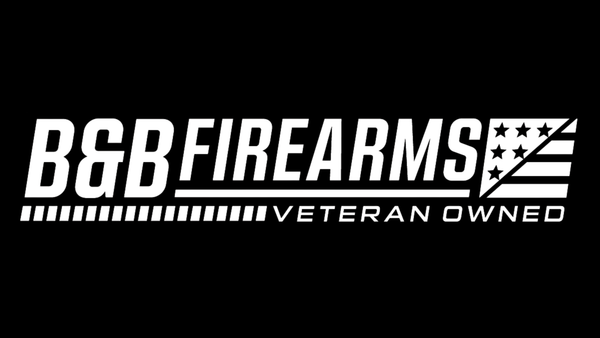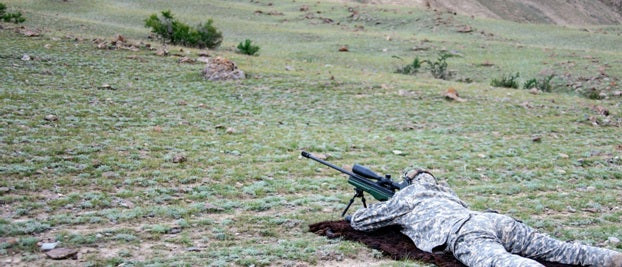There is a world of difference between shooting a handgun at a target 25 yards off and pulling the trigger on a long-range rifle whose optics are trained on a target over a mile away.
Heck, there’s a pretty big difference between the latter and shooting at 100 yards with a rimfire.
Consequently, the considerations and tips that will yield success (connecting with your target consistently) vary across the disciplines.
This short post will offer you some insights into how to become more proficient (and accurate) with the long-range rifle of your choosing.
The Rifle (and Cartridge) Matter
First things first, some rifles and cartridges are good for long-range shooting, and others are not.
Rifles that are designed for long-range shooting will have barrels rifled and tempered to extreme tolerances that will yield extreme accuracy and consistent harmonics necessary to hit a target at range in excess of 1000 yards.
A good long-range rifle may also have an integrated bipod (or tripod), an exceptionally crisp trigger, and be heavy enough to absorb most of the recoil of its cartridge.
Which is another thing - some cartridges are inherently better for long-range shooting than others. Some of the best of these (based on ballistic coefficient) are .223 Remington, .22-.250, .220 Swift, 6.5 Creedmoor, and on the extreme end, .375 and .408 CT, .338 Lapua, and .50 BMG.
There are also lots of quality long-range rifles, like the CheyTacⓇ M200 Intervention, McMillan TAC-338 and TAC-50C, and ArmaLite AR-50A1.
So Does the Optic
As important as the rifle is, the optic is also critically important. High-quality optics will be consistent, minimize parallax distortion, have (in some cases) variable magnification settings, and be adjustable down to (at least) MOA, if not in quarter-MOA increments.
Remember this - even though it’s customary to spend several thousand on a high-end long-range rifle, you might be in the running to spend nearly as much on the scope, and there’s nothing wrong with it. Don’t cheap out if you actually want to connect with targets that are a mile or more away.
A Stable Shooting Rest
As important as an accurate rifle and a suitable cartridge as a baseline for success in long-range rifle shooting, a stable shooting rest is equally important.
Let’s just put it this way. Even an extremely precise long-distance rifle is not going to perform well from a poor shooting rest.
The shooting rest must be stable; ideally, it should not move at all because any movement at all is going to translate to misses downrange, especially at extreme distances. This cannot be avoided.
This equates either to shooting from a bench or shooting from the ground, and if doing the latter, a good shooting rest is necessary, either bags or a bipod or tripod. Some rifles, like the CheyTacⓇ M200 Intervention, are made with integral tripod systems that can be used to level and stabilize the rifle before shooting at extreme distances.
Gripping the Gun Properly
Or rather, it should be called gripping the gun minimally, because one of the reasons you need a good shooting rest in the first place is so that you need to exert as little pressure on the rifle as possible.
In a perfect world, you’d hardly be contacting the gun at all. Do not torque the gun in your grip or lean heavily into the chassis with your shoulder and cheek. You should be contacting it as minimally as possible.
The reason for this is so that you can (ideally) impart few to no competing torque or forces on the gun. You don’t want to be pushing on or twisting the stock or grip.
On top of that, anywhere your body contacts the rifle, your breathing and heart rate (and other involuntary muscular tremors) will impact the gun, shifting the point of aim ever so slightly.
It might even be called nearly imperceptible, but it will most certainly be perceptible at 1000 yards or more.
So maintain minimal contact with the rifle.
Breaking the Trigger
This follows the same thread of logic that you don’t want to be placing undue forces on the rifle itself.
You don’t want to smear or jerk the trigger, and you want the middle of the pad of your index finger in contact with the blade of the trigger. Both too much and too little trigger finger can be problematic.
Also, you want (ideally) to move the trigger exactly rearward. There are drills you can run to help with this, like pencil drills, that will coach you on proper trigger discipline and control.
Breath Control
Lastly, you’ll want to practice proper breathing control. Some coaches will tell you to hold your breath when shooting, but if you pause too long before shooting your vision will start to get dim, and on top of that, holding your breath does nothing to mitigate your heartbeat, which can also make your rifle move a little.
Rather, it’s advisable to shoot on the natural pause in your breathing cycle, after you’ve fully exhaled but before you’ve drawn your next breath. This will help minimize any aberrations your breathing incurs on your accuracy.
Explore Long Range Rifles Here

Put some of these tips in practice the next time you visit the range; hopefully you found them valuable.
Meanwhile, shop extreme long-range rifles here at B&B Firearms. We sell some of the best long-range platforms in the industry and even offer select interest-free payment plans. Contact us for details.

